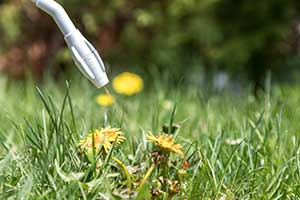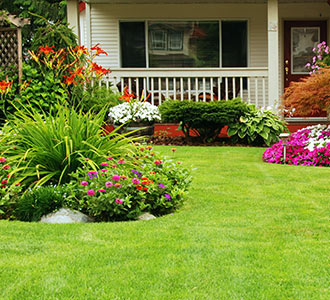How to Get Rid of Weeds Once and For All
Weeds are by far the most challenging item in your yard care routine. From the endless pulling to the defeat you feel when you walk outdoors and find weeds have overtaken your yard once again, it is a never-ending battle. Weeding physically is not enough; in fact, if all you do is pull weeds as you see them, you will have no end in sight to this task right through the warm season.
After all, bare land is ripe for the taking for Mother Nature. To find the best way to get rid of weeds permanently, you must know what you are dealing with and put some effort into eradicating them for good.
What Types of Weeds are You Dealing With?
The kind of weeds you have determines how you go about removing them. Herbicides are not a one-size-fits-all solution. Typically, lawn weeds fall into 3 categories: grasslike plants, broadleaf plants, and unwanted grasses.
- Unwanted Grass: Unwanted grass species pop up in your lawn and bare dirt areas. When looking for how to get rid of weeds in gardens, realize that what you have in your garden beds could be grass; not weeds. The most common type of unwanted grass weeds includes wild strawberry, crabgrass, annual bluegrass, and yellow wood sorrel.
- Grasslike Plants: Grass-like weeds are common offenders of lawn weeds, and they are not treated the same as broadleaf weeds. Dayflower and quackgrass are examples of these plants.
- Broadleaf Weeds: Broadleaf weeds spread, create rosettes or have whorled leaves. They grow in turf, sidewalk cracks, and just about anywhere they have the open land and opportunity. Any weed with veins branching out in various directions are broadleaves and include purslane, burning nettle, Russian thistle, bristly oxtongue, clovers, dandelions, kochia, thistles, and stickleaf.
How to Get Rid of Weeds and Prevent them from Growing
Weeding and walking away is never the solution. Instead, you must find a solution that suits your type of weed, but also keeps others from taking up residence in your garden beds, mulched areas, and even your lawn.
Here is how to get rid of weeds in flower beds, gardens, and more:
Crowd Them Out: Weeds are opportunists. When you have spare land, they utilize it. Healthy grass and gardens crowd them out and give weeds less opportunity to grow. Fertilize your grass lawns, but not too much. Otherwise, you are feeding weeds like crabgrass.
- Consider the Soil Condition: Moist, damp soil attracts ivy. You can improve drainage and aerate the soil to keep ivy from growing and spreading rapidly.
- Hand Weed What You See: If you want to know how to get rid of weeds in a garden naturally, you must first start with the obvious: pulling weeds. Once you have removed the weeds by hand (including their in-ground roots), you can move on to prevention. Once the weed has found a home in your yard, do not assume that spraying with a herbicide and walking away will do the job. Pulling young weeds, such as dandelions, ensures they do not have the chance to seed and spread across your garden.
- Apply a Herbicide: Herbicides should be your last resort. While they are the most offered up option when asking how to get rid of weeds in a vegetable garden or lawn, the issue is their safety. In a vegetable garden, you are contaminating your food with chemicals. Also, herbicides are harmful to pets and people. Overuse could permanently damage your lawn too.
When weeds overrun your yard, do not despair. Instead, contact the experts at Greenbloom. We offer lawn services that keep your grass green, and also the pesky weeds at bay. We help identify what weeds you are dealing with and eradicate them. We also treat your garden so that weeds stop coming back.
If you want to know more about how to get rid of weeds in mulch beds, lawns, and gardens, contact us at Greenbloom. You can also call us at 647-500-5263.

 Crowd Them Out: Weeds are opportunists. When you have spare land, they utilize it. Healthy grass and gardens crowd them out and give weeds less opportunity to grow. Fertilize your grass lawns, but not too much. Otherwise, you are feeding weeds like crabgrass.
Crowd Them Out: Weeds are opportunists. When you have spare land, they utilize it. Healthy grass and gardens crowd them out and give weeds less opportunity to grow. Fertilize your grass lawns, but not too much. Otherwise, you are feeding weeds like crabgrass.




